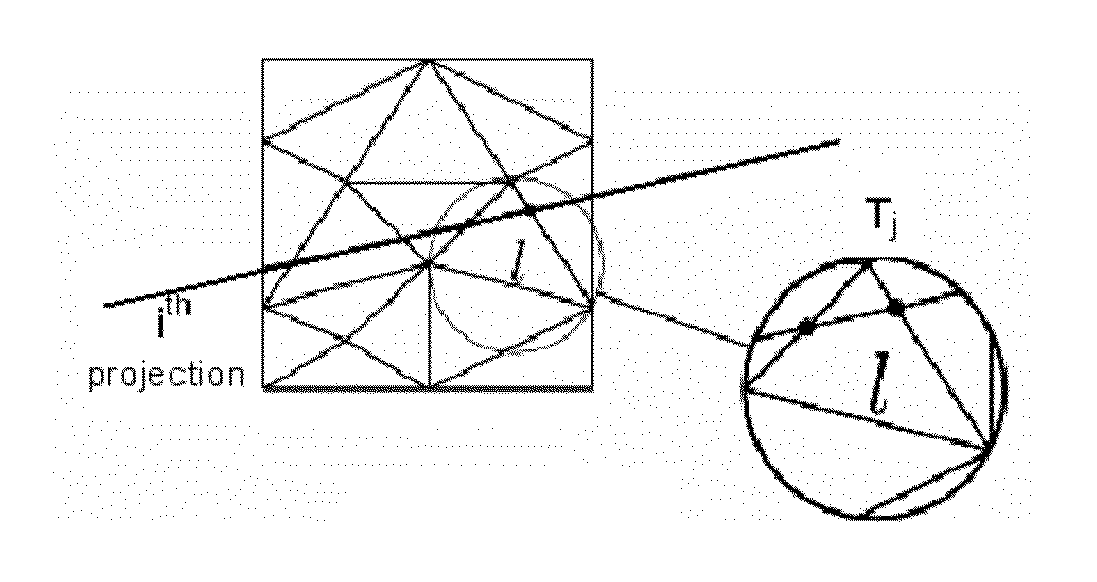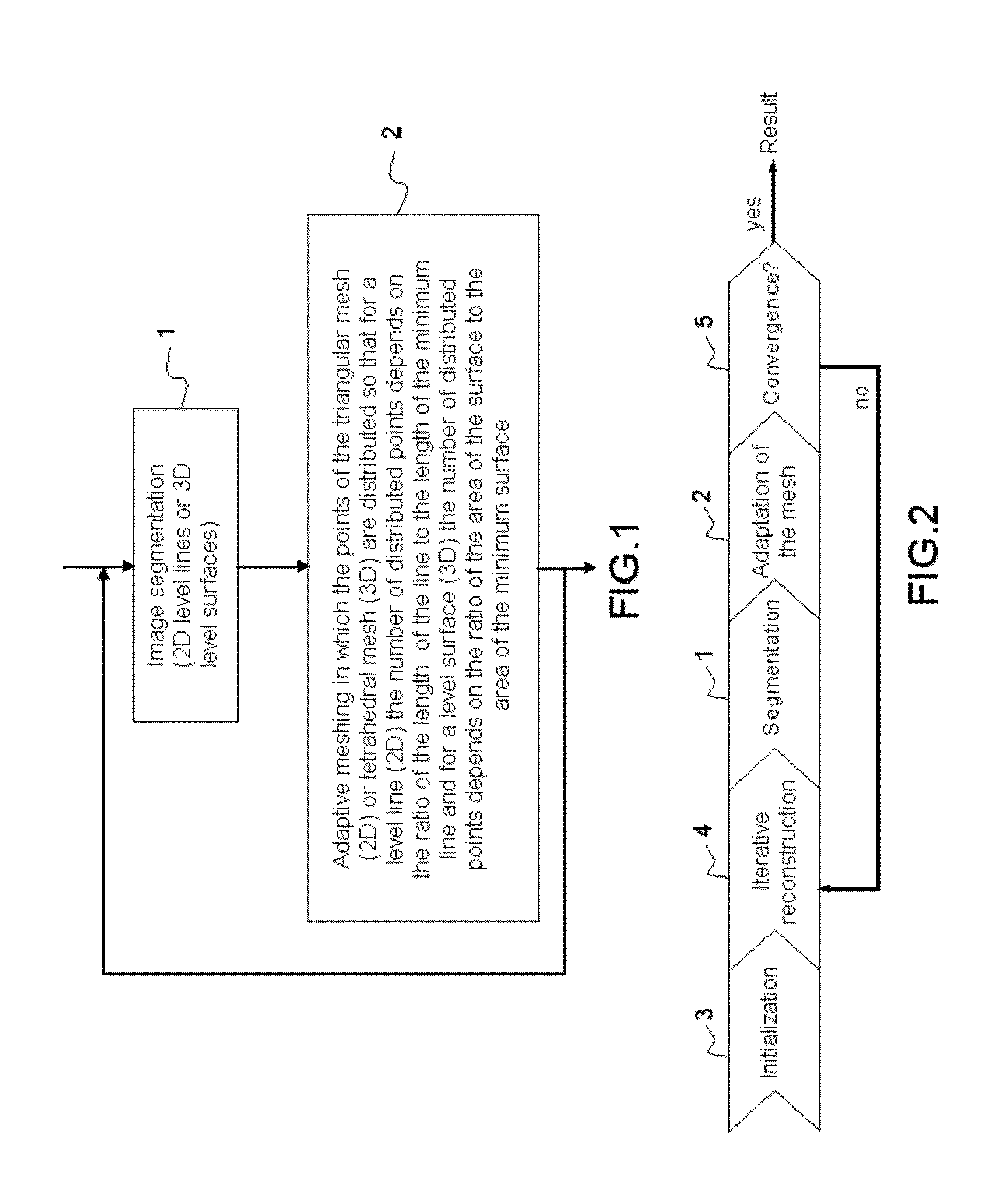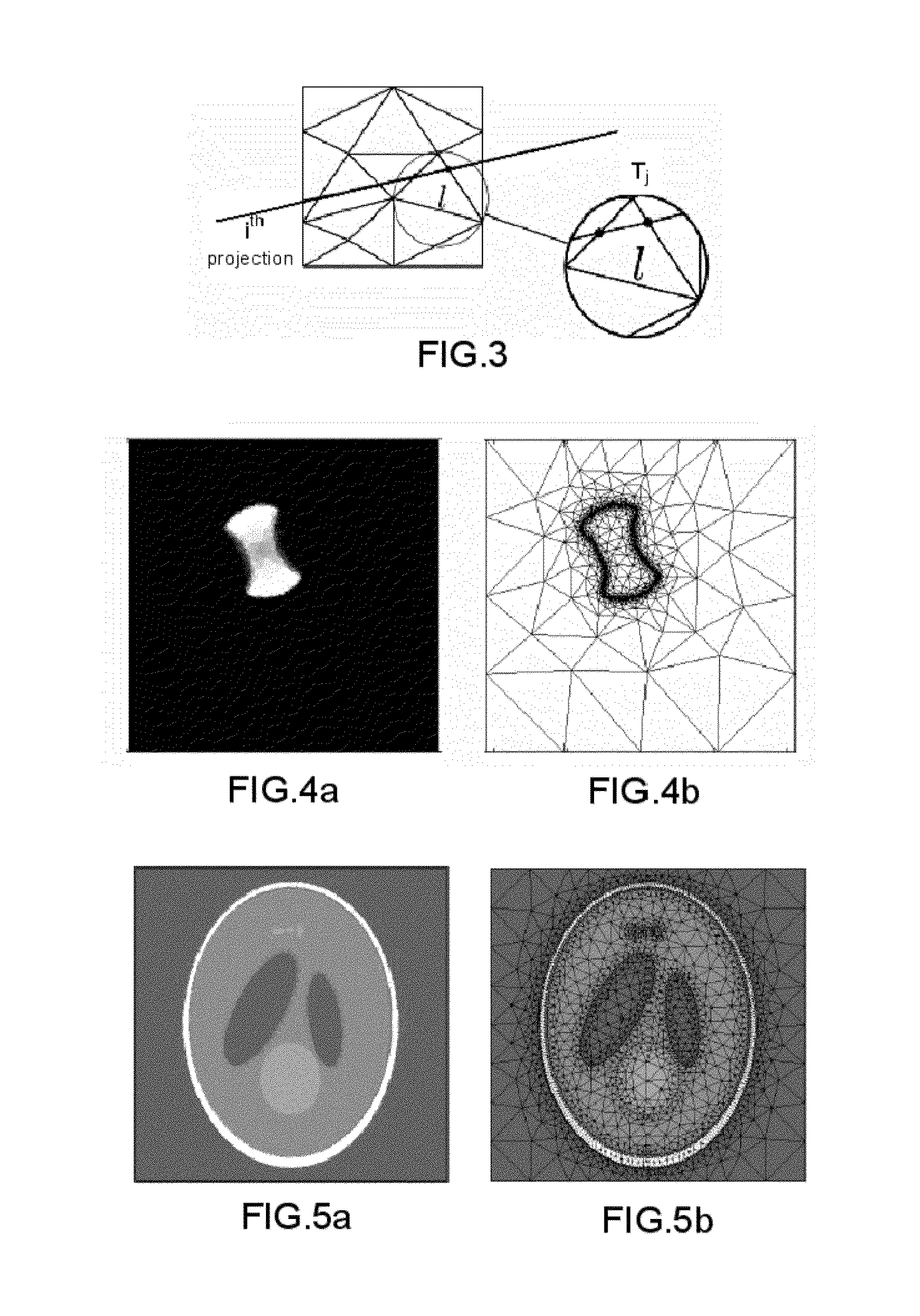Iterative method for determining a two-dimensional or three-dimensional image on the basis of signals arising from x-ray tomography
a two-dimensional or three-dimensional image technology, applied in image data processing, character and pattern recognition, instruments, etc., can solve the problems of significant artefacts, poor conditioning of problems, and quadratic criteria showing the major drawback of smoothing the contours (gradients) of reconstructed objects, so as to reduce the number of unknowns
- Summary
- Abstract
- Description
- Claims
- Application Information
AI Technical Summary
Benefits of technology
Problems solved by technology
Method used
Image
Examples
Embodiment Construction
[0042]In all the figures, the elements having the same references are similar.
[0043]In FIG. 1 is schematically illustrated an iterative method for determining a two-dimensional or three-dimensional image on the basis of signals arising from X-ray tomography according to one aspect of the invention, comprising:[0044]a step 1 of segmenting the image by separating distinct materials respectively by level lines for a two-dimensional image or by level surfaces for a three-dimensional image, and[0045]a step 2 of adapting the mesh, respectively triangular for a two-dimensional image or tetrahedral for a three-dimensional image, in which points are distributed in an equidistant manner respectively over a level line for a two-dimensional image or over a level surface for a three-dimensional image, serving to formulate the constrained mesh, respectively triangular for a two-dimensional image or tetrahedral for a three-dimensional image, so that the number of distributed points depends respect...
PUM
 Login to View More
Login to View More Abstract
Description
Claims
Application Information
 Login to View More
Login to View More - R&D
- Intellectual Property
- Life Sciences
- Materials
- Tech Scout
- Unparalleled Data Quality
- Higher Quality Content
- 60% Fewer Hallucinations
Browse by: Latest US Patents, China's latest patents, Technical Efficacy Thesaurus, Application Domain, Technology Topic, Popular Technical Reports.
© 2025 PatSnap. All rights reserved.Legal|Privacy policy|Modern Slavery Act Transparency Statement|Sitemap|About US| Contact US: help@patsnap.com



